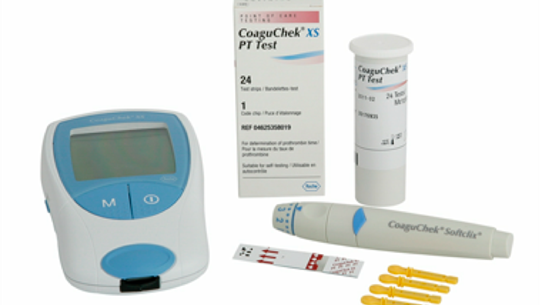A self-monitored ac-treatment has been used in Denmark since the mid 90’s and is offered in 8 different centres all over the country. If patients are going to be treated with anticoagulant (AC) therapy for more than a year, the anticoagulant therapy centre (AC Centre) can offer patients training in handling their treatment themselves, at home. After the training, the patient must continue to work with the AC Centre and have follow-ups with a nurse. The health care staff will regularly review the patient’s AC treatment and the centre will be available with guidance on the treatment.
Patients will no longer have to go to the AC Centre many times a year to get treated, which reduces costs and time spent for both patient and health professionals. The solution enables patients to live their life as normal as possible. The patients get treated better than they normally would because they become experts on their treatment and symptoms.
The solution can be used for patients who require AC therapy for more than a year, and for patients that are considered suitable to take care of their own treatment. The solution shall not be used for fragile patients as it might cause them to get a worse treatment than they otherwise would.
 Distance treatment
Counseling via online tools with associated treatment or own treatment.
Distance treatment
Counseling via online tools with associated treatment or own treatment.
 Distance monitoring
Social care remotely with sensors, cameras, reminders and data collection.
Distance monitoring
Social care remotely with sensors, cameras, reminders and data collection.
 Distance meetings
Close care concepts that move the point of healthcare closer or into the citizens' own homes.
Distance meetings
Close care concepts that move the point of healthcare closer or into the citizens' own homes.
 New distance-spanning solutions
New innovative solutions, new national infrastructure for digital services and service models where citizens can take greater responsibility.
New distance-spanning solutions
New innovative solutions, new national infrastructure for digital services and service models where citizens can take greater responsibility.
 Show all solutions
Show solutions from all four categories
Show all solutions
Show solutions from all four categories
